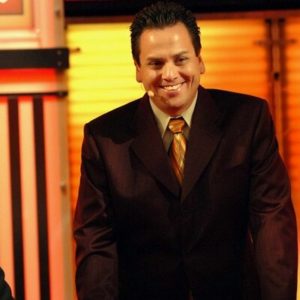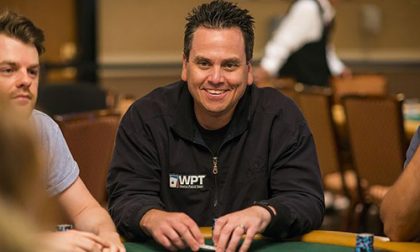Matt Savage: “Big Blind Ante is Here to Stay!”
In a blog post last week, World Poker Tour (WPT) Tournament Director and Poker Hall of Fame finalist Matt Savage announced that he intends to make the Big Blind Ante a permanent fixture across the board at all WPT stops, espousing the benefits of the young tournament feature.
 Like many novel ideas, the Big Blind Ante was controversial when it was introduced at the ARIA last year. It is a simple concept, yet it flew in the face of poker tradition, so many people thought it was bonkers. As we know, in most tournaments, an ante is introduced at some point to speed things along and juice the pot. The players in the big blind and small blind post their forced bets and every player at the table puts in a small amount of chips before the cards are dealt, building the pot before the hand.
Like many novel ideas, the Big Blind Ante was controversial when it was introduced at the ARIA last year. It is a simple concept, yet it flew in the face of poker tradition, so many people thought it was bonkers. As we know, in most tournaments, an ante is introduced at some point to speed things along and juice the pot. The players in the big blind and small blind post their forced bets and every player at the table puts in a small amount of chips before the cards are dealt, building the pot before the hand.
Trying to Make Tournament Life Easier
With the Big Blind Ante, rather than having every player post the ante, the person in the big blind pays the ante for everybody. For instance, if the blinds are, say, 1,000/2,000 at a nine-handed table and the ante is 100 chips, the big blind will pay his 2,000 chip blind as always and pay a 900-chip Big Blind Ante. Those 900 chips are the equivalent of a 100 chip ante for all nine players (including the person in the big blind) at the table. Nobody else pays an ante. On the next hand, the new big blind player posts the 900-chip ante, and so on and so forth.
The idea behind the innovation was to simplify and speed up the game. It is very common for players to forget to pony up their ante, which results in delays as the dealer reminds them to pay. The dealer needs to be constantly keeping track of which chips are antes and with nine or even ten players at a table, it is easy to lose track. Confusion leads to delays and frustration.
It More Than Worked, In Savage’s Opinion
In his blog post, Matt Savage said that he originally thought the Big Blind Ante was a dubious proposition, but he was willing to introduce it at the Commerce Casino last year to give it a shot.
“Initial response in the first level of play was mixed, but 10 minutes later the players were raving about it,” he said.
After that, he gradually expanded the use of the Big Blind Ante in other events and he is now convinced that it is the way to go in every event from now on. He provided a laundry list of benefits:
1. Dealers, staff, and players alike have universally claimed how much easier and more efficient it is.
2. More hands are being dealt, allowing structures to remain deeper for longer portions of tournaments.
3. Dealers are not having to bother distracted players for their antes every hand.
4. There are no more mistakes and floor calls asking, “Who owes an ante?”
5. There are less chips in play, less need to make change, and fewer annoying bets of 1,675.
6. The bottom line is that BBA is faster and downright better!
One of the main complaints, Savage, said, was that some believe the Big Blind Ante hurts short stacks, as having to put up not just the big blind but everyone’s antes as well can really eat into the lesser stacks at the table. He responded, though, that the Big Blind Ante helps short stacks, giving the following reasons:
1. The antes are LESS per round during seven-, eight-, nine-, and 10-handed play and the same at six-handed play in many levels.
2. You don’t have to ante eight out of nine hands in full ring.
3. You can win more when not in the big blind than you can win with individual antes because you win the full ante even if you only have one chip.
Those last two points are interesting. Though posting the Big Blind Ante hurts, you don’t have to post any ante the rest of the orbit, giving yourself cheaper hands most of the time. And because players can win all of the antes no matter how many chips you have, you gain more in a winning hand when not in the big blind than you would with traditional antes.
Savage understands that it sometimes seems unfair if a table is a player short or if someone gets moved to a new table and has to be in the big blind right after he was in it at his last table, but he rightfully said this happens already and it’s random, so it is “unfair” to everyone equally.
Savage also addresses the debate about whether the big blind or the big blind ante should be posted first (which is important when someone is short), but you can read the blog if you want to dive into that.
“I look forward to bringing big blind ante to all markets globally and to the Tournament Directors Association (TDA) annual summit held next summer at ARIA in Las Vegas, the property that started the whole BBA craze in the first place,” Savage concluded. “The TDA and I share a mantra of consistency and, whether or not you personally agree, you should live with the change to be consistent for the benefit of the players. I know that big blind ante is a great change to no-limit hold’em poker tournaments. The big blind ante is here to stay!”



















COMMENTS